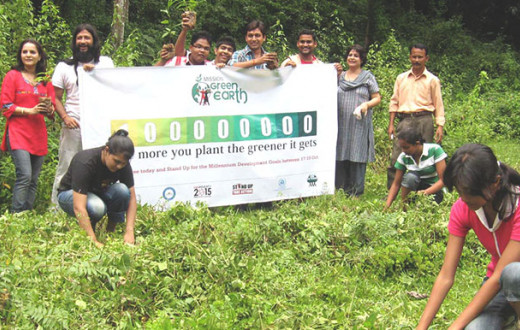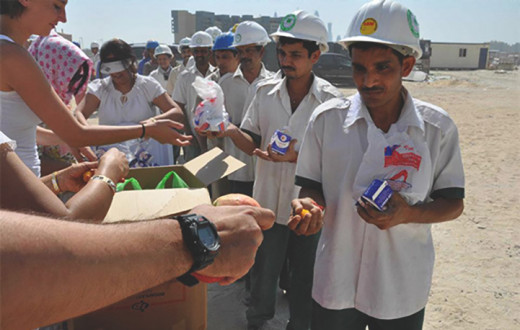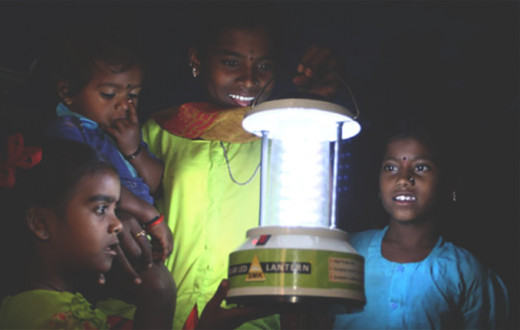A mission to restore, regenerate, revive!
India is facing its worst water crisis in four decades. At least 54 percent of the sub-continent has turned into a water-stressed dust bowl with many rivers rapidly drying up. Experts opine that by 2025, the country will be facing an acute water crisis if no preventive measures are taken today.
To mitigate the water crisis, Gurudev Sri Sri Ravi Shankar has inspired The Art of Living community to revive lost rivers in various parts of India and other water bodies such as ponds, wells, canals and temple tanks.
The River Rejuvenation Project, which started in 2013 with the aim to provide a long-term and lasting solution, has revived 33 dying rivers in four states (Maharashtra, Karnataka, Tamil Nadu and Kerala), benefitting 3,000 villages.
With meticulous planning and consistent efforts, results have come in: several rivers and other smaller bodies in these states have started flowing once again.
“We have always used the water from the holy rivers like Ganga and Yamuna to purify ourselves, but today we have reached a point where we have to purify this water. So, we are waging a war against pollution in our rivers. The government alone cannot do it. We will have to come together.” ~ Gurudev Sri Sri Ravi Shankar
Our approach
Although the average amount of rainfall has remained the same over the past 50 years, many rain-fed rivers have become dry. It was found that the main cause behind this is not the lack of supply of water, but rather its mismanagement and unchecked overuse. Rain-fed rivers have dried because of disruption of natural groundwater recharge mechanisms, thereby disabling rivers from replenishing themselves.
The Art of Living devised a three-pronged approach for its river projects:
Comprehensive: Provide local solutions in a scientific manner that mimic natural systems of restoring water.
Sustainable: Solve immediate needs of giving people access to safe water and also create systems that ensure reliable supplies in the future.
Community-driven: Empower local communities through capacity building frameworks.
Our project planning
One of the main reasons for the success of these river projects has been the adoption of a structured strategic planning process. Since 2013, the work was taken up in two stages - a short-term goal and a long-term goal - which included the following steps:
Desilting river beds and water bodies
De-silting had multiple benefits. It deepens the river bed and made it possible to collect more water and the silt is rich in nutrients.
Afforestation
Dr. Lingaraju Yale, Director of The Art of Living River Rejuvenation projects and a groundwater expert, found that rainfall levels, however dynamic the patterns, have not changed over the years. The problem is simply the way water is used. Rivers are fed by little streams which emerge from the hills, and these have gone dry, the sole cause is deforestation. Based on the findings, plantation activity has begun in catchment areas.
Change in cropping pattern
Farmers who could harvest only one crop per season are now able to harvest multiple crops. The yield has also increased by double.
Our Impact
Improvements in groundwater levels
The primary impact of the river restoration projects has seen improvements in groundwater levels in the 7,500 sq. km implementation area, over 65% of which is classified semi critical, critical or overexploited by Groundwater Surveys and Development Agency (GSDA).
Increasing farmers’ incomes
The consistency in water supply has augmented farmers’ incomes through improved agricultural yields and increased the number of crops per year, directly reducing farmer suicides.
Curbing water tanker mafia
This has helped to curb the water tanker mafia that has proliferated in the target regions during the past decade.
Community Engagement and employment generation
A significant proportion of these river restoration projects, executed under Mahatma Gandhi National Rural Employment Guarantee Scheme, generated 6.5 lakh days of direct rural employment.
900 Jal Sevaks (Water Warriors), trained through capacity building workshops, created focused grassroots leadership in the villages.
30,000 people were further sensitized through multi-level engagement, consisting of training, meetings and mass media use.
This approach of community engagement facilitated social equity, for instance in Naganadhi River Rejuvenation project in Tamil Nadu, nearly 90% of the ongoing project workers are women.
Multiple partnerships with the governments
The success of the projects undertaken in partnership with the governments has resulted in major changes to water policy and current government structures.
List of rivers
Maharashtra: Gharni, Tavarja, Jana, Mudgul, Manjara, Rena, Waki, Terna, Rajegavi, Benitura, Bori, Narola, Galhati, Gomai, Shivganga, Vena, Waghadi, Panzan, Kalki, Shivnadi, Manganga, Ramnadi, Bahiravi, Soyanjana, Bhogwati
Karnataka: Kumudvathi, Vedavathi, Palar
Tamil Nadu: Kowsika, Goddar, Naganadhi, Shanmuga
Kerala: Pampa
Future Outreach
Going forward, 70 lakh people from water deficient regions spanning 25 districts in the states of Maharashtra, Karnataka, Tamil Nadu, Madhya Pradesh and Rajasthan will be directly benefited by the improved availability of water.
Success Stories
“My farms are next to a lake which has been dry for two decades and my bore well used to have only 1.5 inches of water where I could only irritate 1 acre of Land. Because of Dr. Lingraju and his team’s efforts, the lake is now restored, my bore well now has 3 inches of land and I can irrigate twice the amount. Eight villages around us have no water and come to us for water supply. To help every day for 1.5 hours I give them free access to water- despite all that, our village is still water abundance.”
~ Muniappa, a farmer from Thyamgondlu in Karnataka
“Last eight years, there was no water. Farming was dependent only on rains, hence had only one crop a year. Now, water is available throughout the year and I grow three crops a year. Earlier, my income was Rs30,000 to Rs40,000. Now, it is over Rs3 lakh. My family and I are very happy.”
~ Dayanand, a farmer from Kalaspur village
Featured Stories:
Kumudvathi river | Naganadhi River | Vedavathi River | Maharashtra’s River Rejuvenation Project | Dr Lingaraju’s story | Nagraj Gongolli’s story







